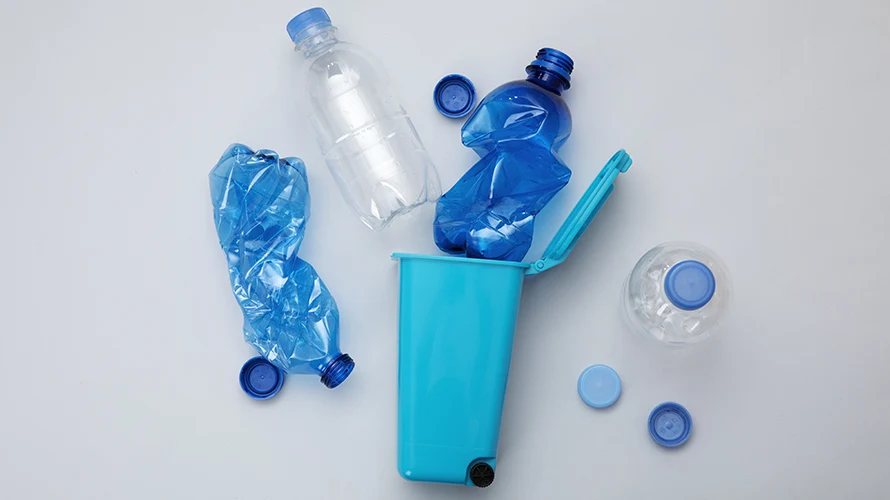A quick overview of the topics covered in this article.
Subscribe to the UKPACK newsletter to receive regular updates on the company, products, services, upcoming exhibitions and more.
In recent years, there has been a growing concern about the impact of plastic waste on the environment. Governments, businesses, and individuals have been looking for ways to reduce plastic waste and increase recycling. One solution that has gained attention is the use of mono-material plastic.
In this article, we will discuss what mono-material plastic is, its advantages and disadvantages, and its impact on the environment.
Introduction
Plastic is a popular material used in many products due to its durability and versatility. However, the disposal of plastic waste has become a significant environmental concern, leading to the search for alternatives to traditional plastics. One alternative is mono-material plastic, which has been gaining attention in recent years due to its potential to reduce plastic waste and increase recycling rates.
What is Mono-Material Plastic
Mono-material plastic refers to a type of plastic made from a single material. This means that the entire product is made from one type of plastic, making it easier to recycle. Mono-material plastic can be made from various types of plastic, including polyethylene (PE), polypropylene (PP), and polyethylene terephthalate (PET).
Advantages of Mono-Material Plastic
Lightweight
Mono-material plastic is lightweight, making it an ideal material for products that need to be transported, such as packaging materials.
Recyclable
One of the primary advantages of mono-material plastic is that it is recyclable. Because the product is made from a single material, it can be easily separated and recycled. This increases the likelihood that the product will be recycled, reducing the amount of plastic waste in the environment.
Lower Carbon Footprint
The production of mono-material plastic has a lower carbon footprint than traditional plastics. This is because the production process requires less energy and fewer raw materials.
Cost-effective
Mono-material plastic is often less expensive to produce than traditional plastics. This is because the production process is simpler, and fewer materials are required.
Disadvantages of Mono-Material Plastic
Limited Durability
One of the disadvantages of mono-material plastic is that it may have limited durability compared to traditional plastics. This is because the product is made from a single material, which may not be as strong as multi-material plastics.
Limited Design Options
Because mono-material plastic is made from a single material, there may be limited design options. This may limit the product’s appeal to consumers who are looking for more diverse designs.
Mono-Material Plastic vs. Multi-Material Plastic
Mono-material plastic differs from multi-material plastic in that it is made from a single material, while multi-material plastic is made from multiple materials. Multi-material plastic may be more durable than mono-material plastic but is often more difficult to recycle due to the different types of plastic used.
Applications of Mono-Material Plastic
Mono-material plastic can be used in a variety of applications, including:
- Packaging materials
- Cosmetic packaging
- Skincare packaging
- Beauty packaging
- Bottles
- Films
- Textiles
- Automotive parts
Environmental Impact of Mono-Material Plastic
Recycling
Mono-material plastic has the potential to increase recycling rates and reduce plastic waste. Because it is made from a single material, it can be easily separated and recycled. This reduces the likelihood that the product will end up in a landfill or pollute the environment.
Biodegradability
While mono-material plastic is recyclable, it is not biodegradable. This means that if it ends up in the environment, it can take hundreds of years to break down.
Landfill
If mono-material plastic is not recycled, it may end up in a landfill. While mono-material plastic is often less harmful than multi-material plastic, it can still take a long time to break down and may release harmful chemicals into the environment.
Conclusion
Mono-material plastic is a type of plastic made from a single material, making it easier to recycle and potentially reducing plastic waste. While it has some disadvantages, including limited durability and design options, its advantages, such as being lightweight and cost-effective, make it a promising alternative to traditional plastics. However, it is important to continue to research and develop more sustainable materials to reduce the impact of plastic waste on the environment.
Frequently Asked Questions
1. Is mono-material plastic better for the environment than traditional plastics?
Mono-material plastic has the potential to reduce plastic waste and increase recycling rates, making it a more environmentally friendly option than traditional plastics.
2. What types of plastic can be used to make mono-material plastic?
Various types of plastic, including polyethylene (PE), polypropylene (PP), and polyethylene terephthalate (PET), can be used to make mono-material plastic.
3. Can mono-material plastic be recycled?
Yes, mono-material plastic is recyclable and can be easily separated and recycled.
4. Does mono-material plastic have any disadvantages?
Yes, mono-material plastic may have limited durability and design options compared to traditional plastics.
5. What are some applications of mono-material plastic?
Mono-material plastic can be used in a variety of applications, including packaging materials, bottles, films, textiles, and automotive parts.

Content Manager at UKPACK. I have extensive experience in the packaging industry and specialize in creating engaging content. I’m passionate about staying ahead of industry trends.
Can I Put Toothpaste in a Pump Bottle? [Pros & Cons Explained]
A few years ago, I noticed something frustrating about traditional toothpaste tubes—they always left behind wasted product no matter how much I tried to squeeze them. The cap would [...]
Aerosols vs. Spray Systems: A Comprehensive Guide to Choosing the Right Option
When it comes to packaging design, especially in the beauty and personal care industries, the choice between aerosols and spray systems can be pretty overwhelming. Both formats serve unique [...]
Can You Bring Cologne on a Plane?
Traveling is one of life’s greatest pleasures, but it comes with its own set of challenges—especially when it comes to packing. One of the biggest dilemmas many travelers face [...]




